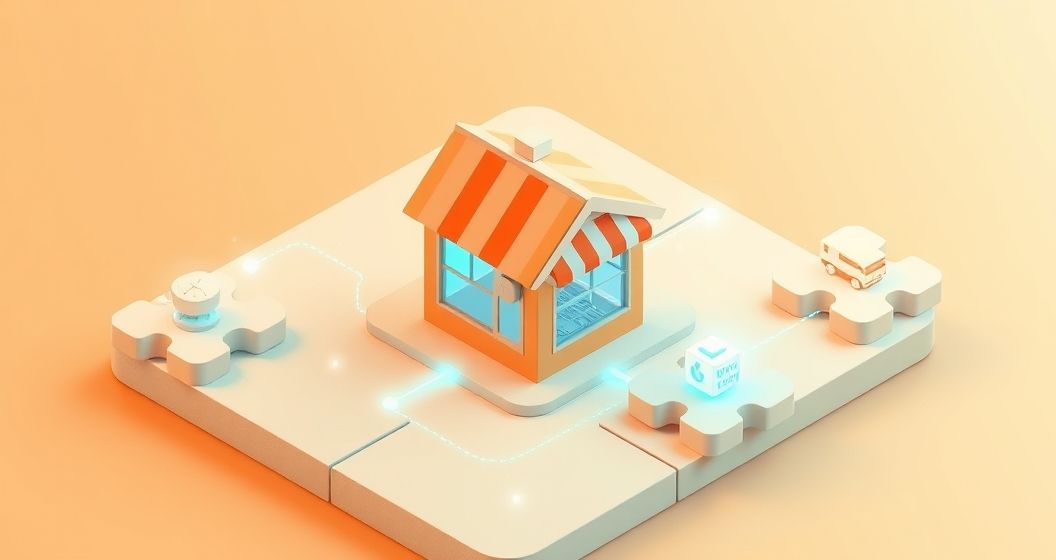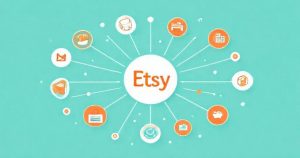Managing a successful Etsy shop involves more than just creating beautiful products. It requires handling marketing, shipping, accounting, and customer service. As your business grows, these tasks can become overwhelming. This is where Etsy integrations come into play. By connecting your shop to specialized third-party applications, you can automate repetitive tasks, streamline your workflow, and unlock new capabilities. This guide explores the essential Etsy integrations that can help you save time, reduce errors, and strategically scale your creative business.
What Are Etsy Integrations?
Etsy integrations are software connections that allow your Etsy shop to communicate directly with other platforms and tools. Think of them as bridges that transfer data automatically between your store and another service. For example, instead of manually copying a customer’s address to a shipping label website, an integration can do it for you the moment an order is placed. This automation is powered by Etsy’s Application Programming Interface (API), which gives approved applications secure access to your shop’s data to perform specific functions on your behalf.
The primary benefit of using these tools is efficiency. By automating key processes, Etsy sellers can free up valuable time to focus on product creation, design, and customer engagement. Furthermore, integrations help minimize human error, ensuring greater accuracy in tasks like inventory tracking and financial reporting. Ultimately, a well-chosen set of integrations transforms your creative hobby into a more professional and manageable business operation, providing a solid foundation for growth and improved profitability.
Key Categories of Essential Etsy Integrations
To effectively manage and grow your business, it is crucial to understand the different types of tools available. Most Etsy integrations fall into several key categories, each designed to solve a specific challenge faced by online sellers. From production and fulfillment to marketing and finance, these applications offer powerful solutions. Focusing on the areas that consume most of your time will help you identify which integrations will provide the most significant impact on your daily operations and long-term success.
1. Print-on-Demand (POD) Integrations
Print-on-demand services are a game-changer for artists, designers, and creators on Etsy. Integrations with platforms like Printful or Printify allow you to sell custom-designed products like t-shirts, mugs, and posters without holding any physical inventory. When a customer buys a POD item from your Etsy shop, the order is automatically sent to your production partner. They then print, pack, and ship the product directly to your customer, with your branding included. This model significantly lowers financial risk and startup costs.
The strategic advantage of using print-on-demand Etsy integrations is scalability. You can expand your product catalog with dozens of new items and variations without any upfront investment in stock. This allows you to test new designs and product types with your audience to see what sells best. For many Etsy sellers, POD integrations provide a flexible and profitable way to turn digital designs into tangible products, automating the entire fulfillment process and freeing them to focus on creativity.
2. Shipping and Fulfillment Integrations
Shipping is often one of the most time-consuming aspects of running an Etsy shop. Shipping and fulfillment integrations connect your store to services like ShipStation, Pirate Ship, or Shippo to simplify the entire process. These tools import your orders automatically, allowing you to buy and print shipping labels in bulk with just a few clicks. They often provide access to discounted postage rates that are not available directly from carriers, which can significantly reduce your operational costs and improve your profit margins.
Beyond printing labels, these Etsy integrations enhance your workflow by automatically updating order statuses and sending tracking information to your customers. This improves the customer experience by providing transparency and reducing inquiries about order whereabouts. For sellers who handle a high volume of orders, these tools are not just a convenience; they are an absolute necessity for maintaining efficiency and providing professional, reliable service that encourages repeat business and positive reviews.
3. Accounting and Financial Integrations
Keeping track of finances is critical for any business, and an Etsy shop is no exception. Accounting integrations connect your store to software like QuickBooks, Xero, or GoDaddy Bookkeeping to automate your financial record-keeping. These applications import your sales data, fees, and expenses directly from Etsy, categorizing transactions and simplifying the process of tracking revenue and profitability. This eliminates the need for manual data entry in spreadsheets, saving countless hours and reducing the risk of costly errors.
Using these Etsy integrations gives you a clear, real-time view of your business’s financial health. You can easily generate profit and loss statements, monitor expenses, and estimate your tax obligations throughout the year. When tax season arrives, having all your financial data neatly organized makes the filing process much smoother for you or your accountant. Proper financial management is a cornerstone of a sustainable business, and these tools provide the clarity needed to make informed strategic decisions.
4. Marketing and Social Media Integrations
Driving traffic to your Etsy shop is essential for generating sales. Marketing and social media integrations help you promote your products more effectively across various channels. Tools like Outfy or Vela can connect your Etsy listings to your social media accounts on platforms such as Pinterest, Instagram, and Facebook. They allow you to schedule posts, create promotional graphics, and share new listings automatically, ensuring a consistent and active online presence without constant manual effort.
Other marketing integrations focus on email marketing, helping you build a mailing list and communicate directly with past customers. By connecting with services like AWeber or Mailchimp, you can send newsletters announcing new products, special promotions, or behind-the-scenes content. This helps foster a loyal customer base and encourages repeat purchases. Automating your marketing efforts through these Etsy integrations ensures your shop stays top-of-mind for potential buyers and helps build a strong brand identity.
Choosing the Right Integrations for Your Shop
With so many options available, selecting the right Etsy integrations can feel daunting. The best approach is to start by identifying your biggest pain points. Are you spending too much time on shipping? Is your inventory becoming difficult to manage? Pinpointing your primary challenges will guide you toward the tools that will offer the most immediate relief and value. It is more effective to solve one major problem at a time than to try to implement multiple new systems at once.
Next, consider your budget and the pricing structure of each application. Many integrations offer a free tier for small shops or a trial period, allowing you to test the service before committing financially. Read reviews from other Etsy sellers and ensure the tool is well-regarded and reliable. Finally, start small. Integrate one new tool, learn how it works, and measure its impact on your workflow before adding another. This methodical approach ensures each integration serves a clear purpose in making your business more efficient.
Conclusion: A Strategic Asset for Growth
Etsy integrations are far more than simple add-ons; they are strategic assets that can fundamentally change how you run your business. By automating the most repetitive and time-consuming tasks, you reclaim your most valuable resource: time. This allows you to focus on the creative work that inspired you to open a shop in the first place. Whether it’s through streamlining shipping, automating marketing, or simplifying finances, the right tools empower you to operate more professionally and efficiently.
Embracing these technologies allows you to build a more resilient, scalable, and profitable business. As you evaluate the needs of your shop, view Etsy integrations as an investment in your own efficiency and long-term success. By carefully selecting applications that solve your most pressing challenges, you can create a seamless operational workflow that supports your growth, enhances the customer experience, and helps your creative business thrive in a competitive marketplace.






